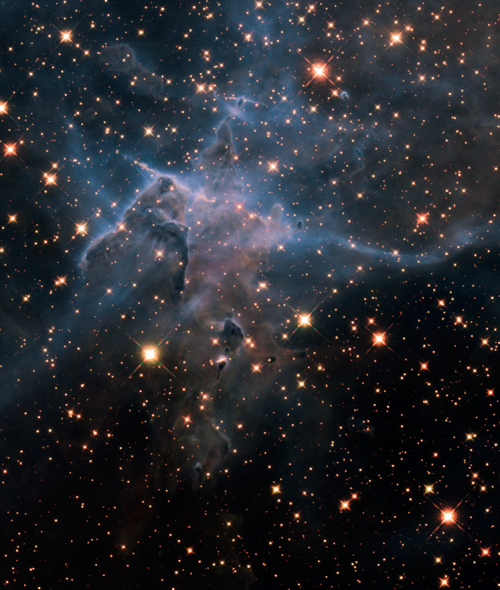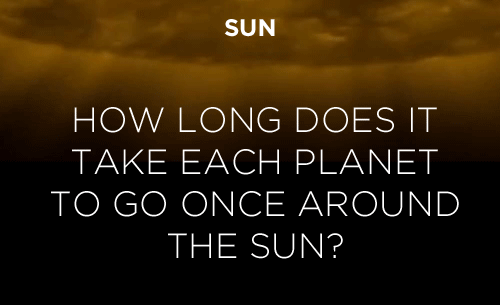Astronaut Tweets
Astronaut tweets























More Posts from Night-hides-the-world and Others

The Mystic Mountain - HH 901
This is a NASA Hubble Space Telescope near-infrared-light image of a three-light-year-tall pillar of gas and dust that is being eaten away by the brilliant light from nearby stars in the tempestuous stellar nursery called the Carina Nebula, located 7,500 light-years away in the southern constellation Carina. The image marks the 20th anniversary of Hubble’s launch and deployment into an orbit around Earth.
The image reveals a plethora of stars behind the gaseous veil of the nebula’s wall of hydrogen, laced with dust. The foreground pillar becomes semi-transparent because infrared light from background stars penetrates through much of the dust. A few stars inside the pillar also become visible. The false colors are assigned to three different infrared wavelength ranges.
Credit: NASA, ESA




Happy Earth Day everyone!
Planet X came to join the party with a topic on earth like planets! Source: http://www.mnn.com/earth-matters/space/photos/10-nasa-images-of-planets-like-earth/more-discoveries-to-come#top-desktop









Here’s the orbital period of our solar system’s 8 major planets (how long it takes each to travel around the sun). Their size is to scale and their speed is accurate relative to Earth’s. The repetition of each GIF is proportional to their orbital period. Mercury takes less than 3 months to zoom around Sol, Neptune takes nearly 165 years.
![A Multi-Camera 360° Panoramic Timelapse Of The Stars By Vincent Brady [VIDEO]](https://64.media.tumblr.com/4e12ed79b6fa93fbd2f17ccd004921d6/tumblr_n7h573O5RR1rte5gyo1_500.gif)
A Multi-Camera 360° Panoramic Timelapse of the Stars by Vincent Brady [VIDEO]
Official video with credit where appropriate for the above images.

Saturn’s hexagonal storm system in it’s north pole

Long exposure of the sky over Yunnan Province in Southwest China.
“ ...The lingering airglow is due to chemiluminescence, the production of light through chemical excitation. Originating at an altitude similar to aurora, it can found around the globe. The chemical energy is initially provided by the Sun's extreme ultraviolet radiation.” X
The scene reflects on the Yuanyang rice terraces as Sirius shines brightly above.
Credit to Cui Yongjiang

The central bulge of our Milky Way Galaxy rises above a sea of clouds in this ethereal scene. An echo of the Milky Way’s dark dust lanes, the volcanic peak in foreground silhouette is on France’s Réunion Island in the southern Indian Ocean. Photo by Luc Perrot.

NASA’s Parker Solar Probe Spies Newly-Discovered Comet NEOWISE by NASA’s Marshall Space Flight Center
-
 charismaquark liked this · 3 weeks ago
charismaquark liked this · 3 weeks ago -
 amdijefri liked this · 3 weeks ago
amdijefri liked this · 3 weeks ago -
 margindoodles2407 liked this · 3 weeks ago
margindoodles2407 liked this · 3 weeks ago -
 seeking-elsewhither reblogged this · 3 weeks ago
seeking-elsewhither reblogged this · 3 weeks ago -
 brightpinkink liked this · 3 weeks ago
brightpinkink liked this · 3 weeks ago -
 maktubisasheep reblogged this · 3 weeks ago
maktubisasheep reblogged this · 3 weeks ago -
 bear-cubs-art-things liked this · 3 weeks ago
bear-cubs-art-things liked this · 3 weeks ago -
 purple-splattered-soul reblogged this · 3 weeks ago
purple-splattered-soul reblogged this · 3 weeks ago -
 fnord888 liked this · 3 weeks ago
fnord888 liked this · 3 weeks ago -
 pikkoart liked this · 3 weeks ago
pikkoart liked this · 3 weeks ago -
 skrytch reblogged this · 3 weeks ago
skrytch reblogged this · 3 weeks ago -
 makeroftherunes reblogged this · 3 weeks ago
makeroftherunes reblogged this · 3 weeks ago -
 makeroftherunes liked this · 3 weeks ago
makeroftherunes liked this · 3 weeks ago -
 that-one-chaotic-person reblogged this · 3 weeks ago
that-one-chaotic-person reblogged this · 3 weeks ago -
 moral-autism liked this · 3 weeks ago
moral-autism liked this · 3 weeks ago -
 robustcornhusk liked this · 3 weeks ago
robustcornhusk liked this · 3 weeks ago -
 nyxkaikaos reblogged this · 3 weeks ago
nyxkaikaos reblogged this · 3 weeks ago -
 the-dao-of-the-zerg reblogged this · 3 weeks ago
the-dao-of-the-zerg reblogged this · 3 weeks ago -
 fairlyprettypictures reblogged this · 3 weeks ago
fairlyprettypictures reblogged this · 3 weeks ago -
 i-am-a-lonely-nerd reblogged this · 3 weeks ago
i-am-a-lonely-nerd reblogged this · 3 weeks ago -
 i-am-a-lonely-nerd liked this · 3 weeks ago
i-am-a-lonely-nerd liked this · 3 weeks ago -
 aliendisco-arts liked this · 4 weeks ago
aliendisco-arts liked this · 4 weeks ago -
 marlequinncos reblogged this · 4 weeks ago
marlequinncos reblogged this · 4 weeks ago -
 so-ein-unsinn reblogged this · 4 weeks ago
so-ein-unsinn reblogged this · 4 weeks ago -
 teigra reblogged this · 1 month ago
teigra reblogged this · 1 month ago -
 teigra liked this · 1 month ago
teigra liked this · 1 month ago -
 bigdogsbisexual reblogged this · 1 month ago
bigdogsbisexual reblogged this · 1 month ago -
 bigdogsbisexual liked this · 1 month ago
bigdogsbisexual liked this · 1 month ago -
 tanelorn8615 reblogged this · 1 month ago
tanelorn8615 reblogged this · 1 month ago -
 fullmuslimalchemist liked this · 1 month ago
fullmuslimalchemist liked this · 1 month ago -
 guineapiginthebunker reblogged this · 1 month ago
guineapiginthebunker reblogged this · 1 month ago -
 fullmetalvampires liked this · 1 month ago
fullmetalvampires liked this · 1 month ago -
 fullmetalscullyy reblogged this · 1 month ago
fullmetalscullyy reblogged this · 1 month ago -
 its-sej reblogged this · 1 month ago
its-sej reblogged this · 1 month ago -
 its-sej liked this · 1 month ago
its-sej liked this · 1 month ago -
 talgra liked this · 1 month ago
talgra liked this · 1 month ago -
 tinivy reblogged this · 1 month ago
tinivy reblogged this · 1 month ago -
 call-me-miss-biskitty reblogged this · 1 month ago
call-me-miss-biskitty reblogged this · 1 month ago -
 dors-ee liked this · 1 month ago
dors-ee liked this · 1 month ago -
 memory-vacant liked this · 1 month ago
memory-vacant liked this · 1 month ago -
 thatisadamnfinecupofcoffee reblogged this · 1 month ago
thatisadamnfinecupofcoffee reblogged this · 1 month ago -
 nathcnhe reblogged this · 1 month ago
nathcnhe reblogged this · 1 month ago -
 transezual reblogged this · 1 month ago
transezual reblogged this · 1 month ago -
 bugsyistrying reblogged this · 1 month ago
bugsyistrying reblogged this · 1 month ago -
 baroquepencils reblogged this · 1 month ago
baroquepencils reblogged this · 1 month ago -
 silvereyedowl reblogged this · 1 month ago
silvereyedowl reblogged this · 1 month ago -
 beddhead-red reblogged this · 1 month ago
beddhead-red reblogged this · 1 month ago -
 push-pause reblogged this · 1 month ago
push-pause reblogged this · 1 month ago -
 peachteasoda liked this · 1 month ago
peachteasoda liked this · 1 month ago
Astronomy and the other wonders you witness when you look to the skies.
115 posts


